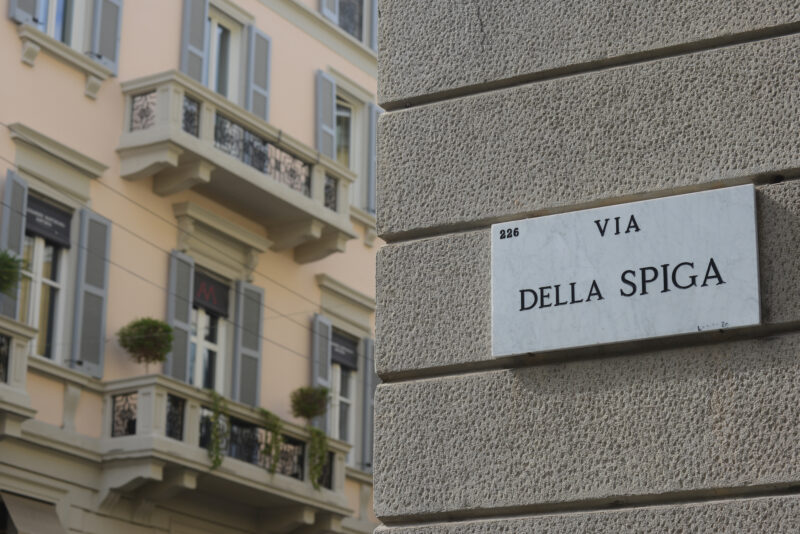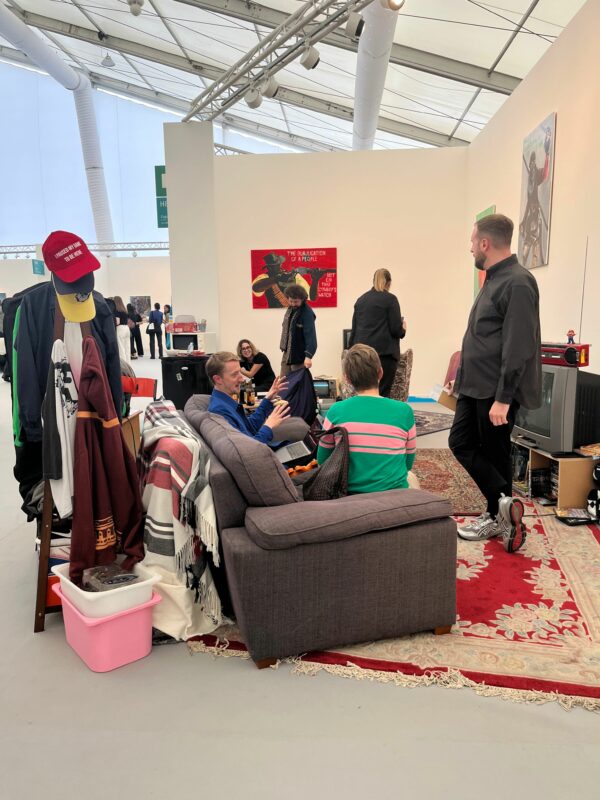Balance. Fountain. Personally, the title of Nari Ward’s first UK exhibition is patterned with a joyous feel. Individually and together these words evoke in me a sense of harmony; of equal distribution, parity and even esteem. Further, in some sense, I find them allusive of effervescent moments carefully frozen in the soft grains of memory-time. Not to be nostalgic, here I think about my childhood teetering on the seat of a seesaw or running between spurts of ice water—common memories from childhood perhaps.


Presented in Lehmann Maupin’s small London gallery, Balance Fountain brings together recent works by Ward, providing something of an overview to his wider oeuvre. Shown here, a range of assemblage objects, scorched and repurposed and rewoven so as to hold a chorus of socio-cultural meanings, a shoelace text piece, visually reverberating copper panels, and a latent sculptural work made in the lead up to Ward’s European foray. (It is of note that this exhibition in London comes ahead of a soon-to-be-announced solo exhibition in a large European cultural institution, another first for this New York based artist—keep your eyes peeled.) At a distance, I have been watching Ward’s practice since 2017, when I saw his touring retrospective, Sun Splashed, at the ICA Boston. In that exhibition, I was transfixed by Ward’s way with materials and form; how he managed to twist urban detritus, mundane stuff collected from the streets of Harlem (New York), into large installations and sculptural pieces, alive resonating sound and/or light. It was a touching exhibition, one which made the politics of being (that is being non-concordent to the structure of White industrial society) formally poetic. Visually raw, malleable yet honest, Ward’s works are both allusive of the complexities of race, migration and notions of democracy, whilst at the same time containing a formal ambiguity that allows a viewing body their own possible interpretation. Indeed, an ambiguity that suggests to me a common sociality we share together.
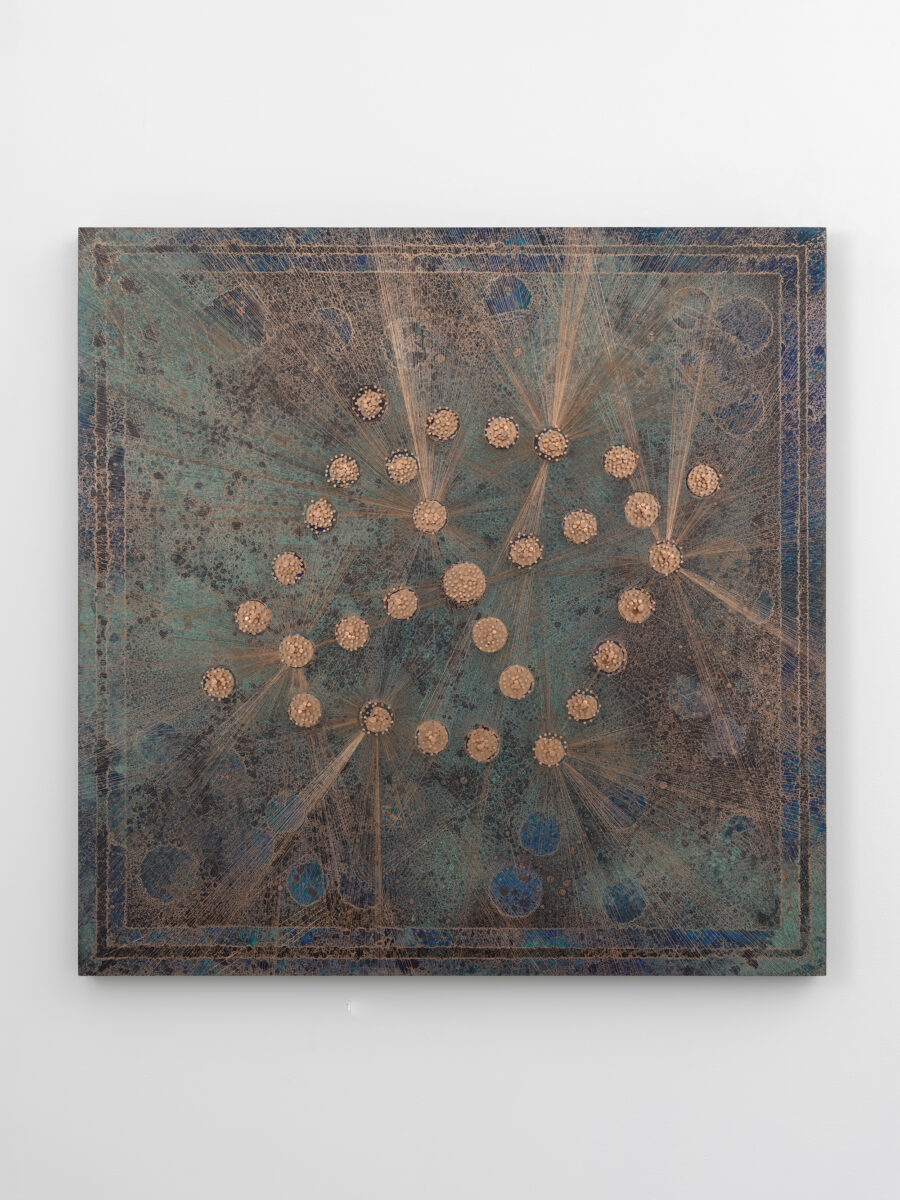
Sitting in his London exhibition, I scribbled the following in my notebook: A sky sea or inconcrete ground as a reflection made in ecstatic scratches / Ancient looking with remnants of fallen feathers and the stains of leaves as they decay upon a city sidewalk / Hot amber coughs in green-blue-pebbled-grey / Dream catchers.[sic] Standing between two of Ward’s large copper works, Restin’ Dream and Restin’ Serenity (both 2023), it is hard for a mind not to wander in and out of visual thinking. Blooming with misty patches of blue through turquoise-green patina, each copper sheet has been perforated by a constellation of twinkling copper nails; like streetlights they pulse still, abstractly in a regimented formation, creating a motif shape, a rhombus intersected with a cross, that appears in many of Ward’s works. Infusing these anomalous scenes, thin scratched lines pull me into each panel’s otherworldly (or rather another-worldly) plan, making me linger in their presence as if I were looking at an abstract street photograph, feeling the extra-ordinary rhythms of urban life rendered newly alchemical. That is, there is a hopefully allusion of something more pressing from these abstract compositions. Following that counterintuitive analogy, stylistically these works at once remind me of the powerful scenes painted by Aaron Douglas and at the very same time, with their sharp geometry and the hard material form, they evoke something of the majesty of allegorical Baroque sculpture. All this to say, these works shine with a timeless, transcendental quality, poetically (politically) defying singular cultural readings.
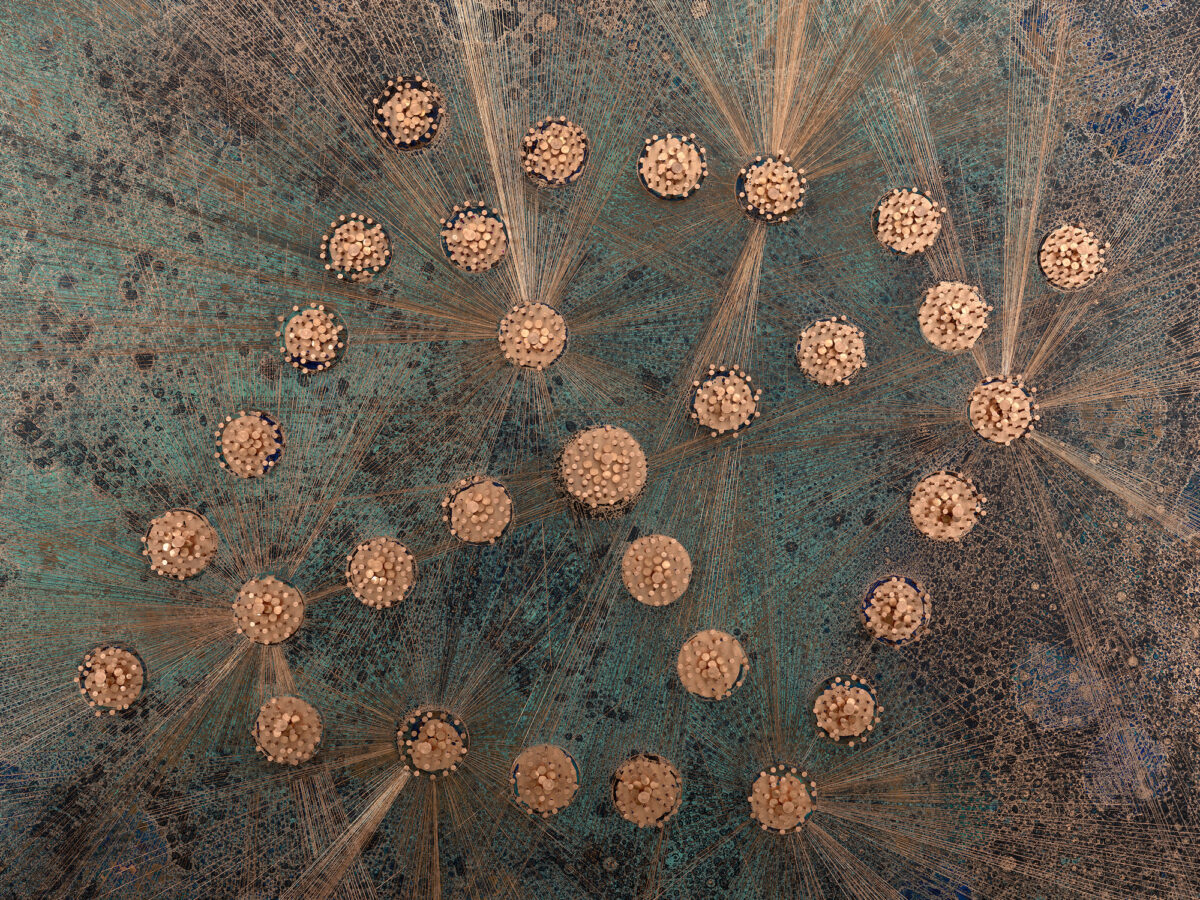
Elsewhere in the exhibition, three smaller copper panels, from Ward’s Prayers Series, render this exalted quality from a more figurative point of view. Each of these squares, titled Circuit I, Circuit II, and Circuit III, appears to show a loosely formed circle between a set of splayed hands. As with Restin’ Dream and Restin’ Serenity here, thin scratched lines cut into the patinated panel giving the works a physical luminosity, as if they were radiating hot amber light. Rather than being drawn into each panel’s surface, the circular forms that act as the protagonists in these works have been demarcated using flathead copper nails hammered into each work’s dark metal skin. That is, delicate beads of copper run the perimeter of each circular shape, at once giving their forms depth—reaching out beyond the flatness of the work’s plan—and at the same time suggesting what these circles could be seen to represent. Resting between hands, and each with a stringy tale, Circuit I, Circuit II, and Circuit III each depicts a string of prayer beads—be these japamala, rosaries, or tasbih. Rendered somewhat abstractly, floating in and as coppery monochrome shapes, these strings shake off the specificities of an individuated religious doctrine, becoming more common faith symbols. Each orbited by wide-spread hands, it feels as if Ward is alluding to some sense of universal faith—a quality of transcendence, religious or otherwise, which I feel most human bodies believe in—or is at least accentuating how faiths can share material spaces as well as common histories, contemporaneous paths and extant socialites
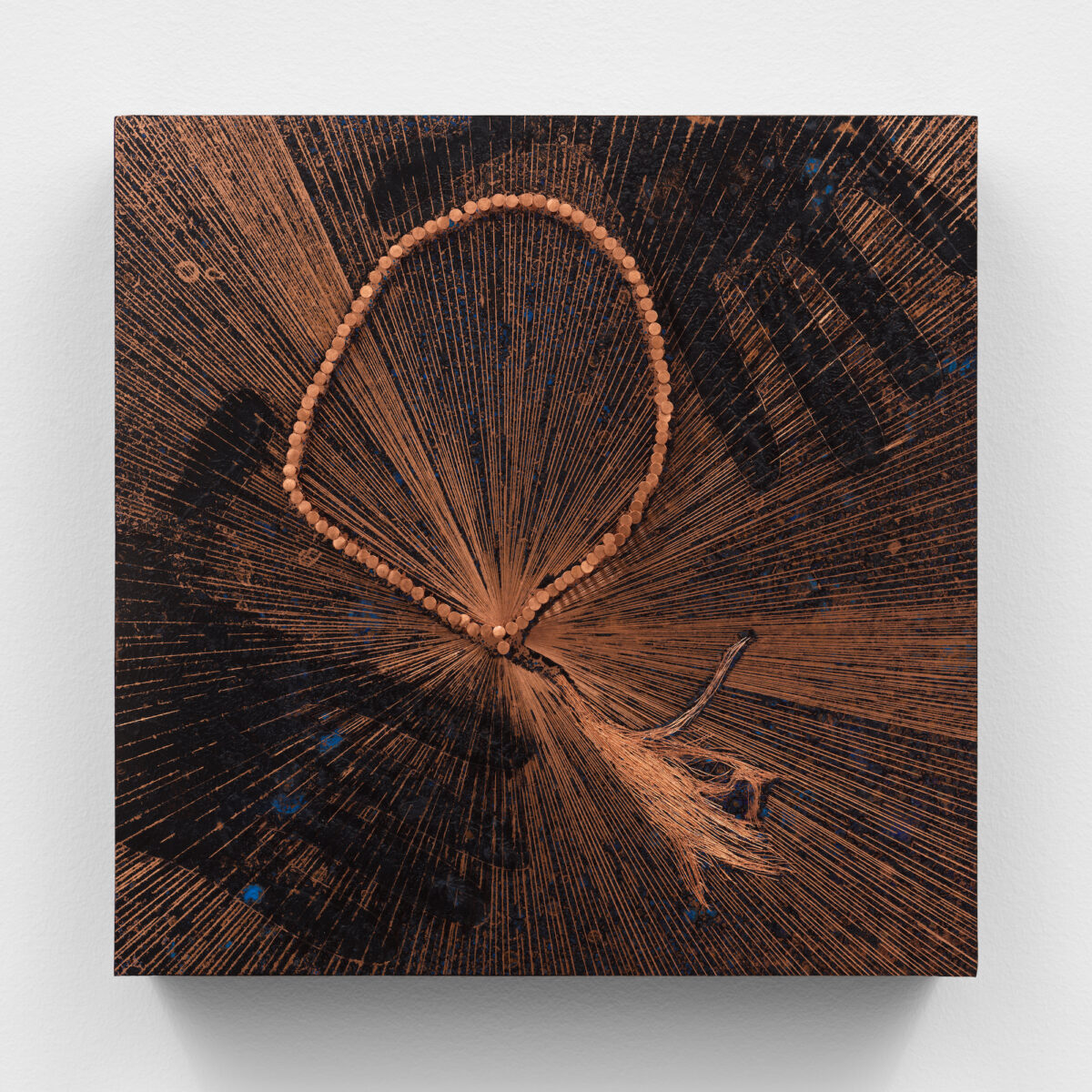

To me, as an exhibition, Balance Fountain is fundamentally about a common sharing of faith. Not so much about faith from a wholly religious point of view but faith as an affinitive mode of being near one another—of sharing and celebrating in a social existence; a joyful sense of commonality found as we move together in urban surround. The floor-based, semi-performative works, Balance Fountain (2013-2014) and Groundin’ Visible (2023) are evocative of this sense for me. Balance Fountain recalls Ward’s practice of assemblage. Formed from a rusted wheelbarrow, window balances, golden mango seeds, cloth and broken pieces of mirror, the sculpture recalls both an urban trash can, overflowing with shining organic matter (or perhaps a very decadent post-flower bouquet) and also, more abstractly, something of a public fountain, bubbling, frothing and spurting thin streams into the air. Originally made for a performance, Balance Fountain formally and functionally alludes to moments of collective reflection; individually apart yet together in space, we look into public fountains, indeed individually apart yet together in space, we look upon performative artworks. In this way, the work becomes a facilitator for looking and specifically for Ward, introspective looking; how we are together and apart in our common flows through life.

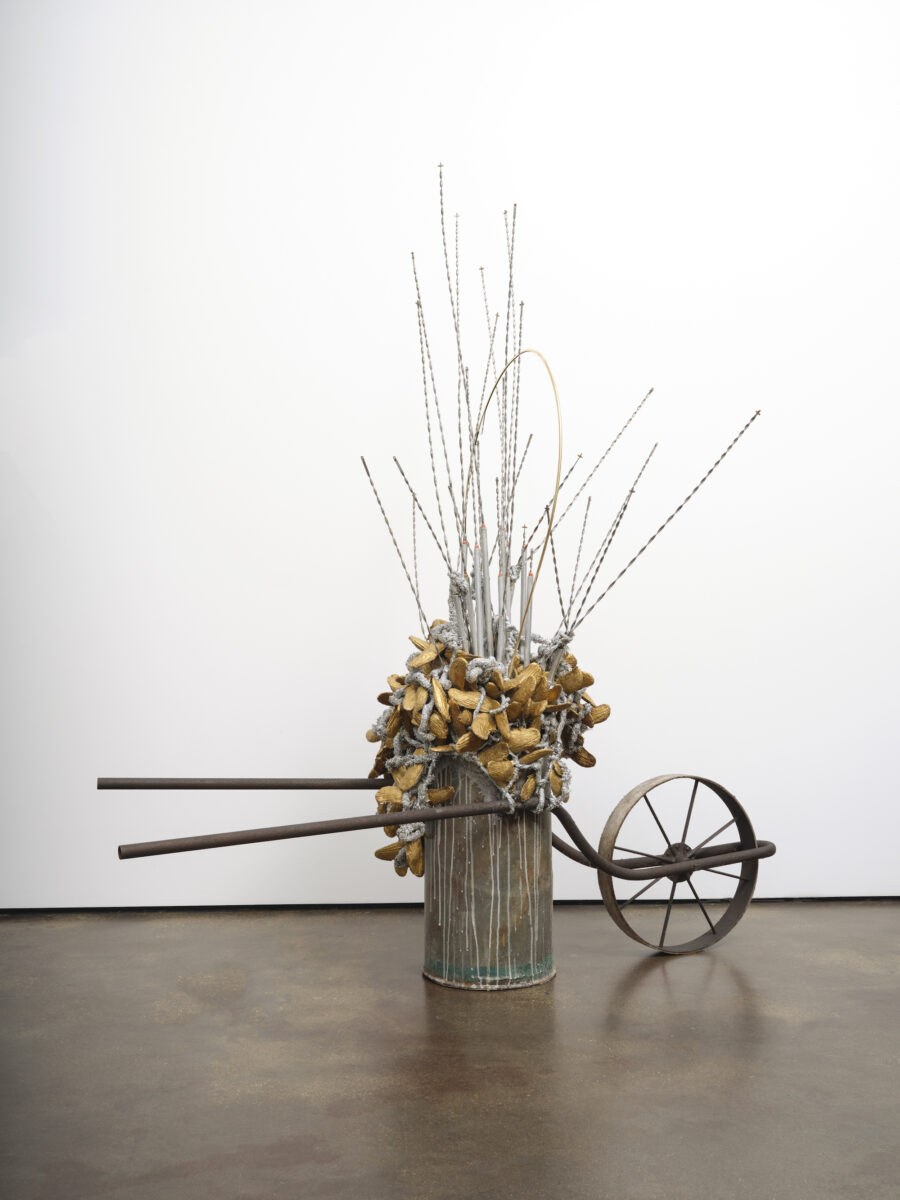
Groundin’ Visible is another copper piece made specifically for this exhibition. Unlike Restin’ Dream, Restin’ Serenity or those from the Prayers Series, Groundin’ Visible is a floor-based sculpture composed of individually copper-clad bricks. Something like a puzzle, collectively these bricks form an abstract ground, one that bears Ward’s rhombus motif and also a sea of different prayer beads and devotional objects negatively printed. Bold, in and as electric blue ripples, the patina used here gives the impression that this solid ground is being seen through water; we could be looking at a common collection of prayer beads lovingly tossed into a wishing well. Inspired by street memorials around his home in Harlem, Ward’s interest in making this work came from visual traces of quotidian devotion. That is, how life and lives are celebrated, lamented, grieved for and renewed on the street—that ambiguous place of cultural specificities; that shared place of human affinities. Embracing all the potentiality of the glorious in the mundane, here Ward recreates a non-specific artefact of faith, giving this a resounding aesthetic presence, something that reflects a sense of joy found in ceremony; a sense we know in our memories and which we can feel together in space.
Nari Ward, Balance Fountain, until January 6th 2024, Lehmann Maupin



